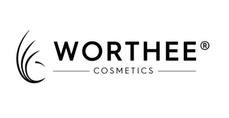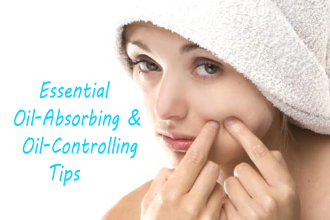“My face is very oily. Will this product help control the oil on my face?”
This seems to be a common question in our inbox all year long. In fact, popular all over the internet, especially during summertime in other corners of the world.
Having a face of oil slick sounds and looks immensely unpleasant. If you struggle with oily skin, you surely know how hard it is to get oily skin under control. When too much sebum is produced, it is a real problem. Skin greasiness and shine negatively impact one’s image. Excessive sebum blocks pores, contributes to blackheads and acne as it provides nourishment to bacteria that live upon the skin (P. acnes).
So of all the products you put on your face, the ultimate goal has to be reducing sebum. But how?

Reducing Sebum: Absorbing & Controlling
Two important concepts to help you better understand how sebum (the “oil” secreted by sebaceous glands within your pores) can be kept minimally, with the right products and methods.
i) Oil-Absorbing
Not uncommon when you are shopping near a cosmetic counter, the beauty assistant grabs your hand and slathers a product, and then says “this product has great oil-controlling properties”. You touch and feel it promptly. Truly, your skin doesn’t feel greasy anymore, so you buy it on the spot. Later at home you realize, your skin is still oily, when you aren’t putting on the said product. Why?

These products contain some powdery ingredients, so they absorb surface oil and water instantly. But, they can’t control the sebum secretion of your pores. Your skin feels less oily, only when you put on these products. On a side note too, these products must not always exist in powder form. A lotion can be oil-absorbing too, if it is formulated with these common powdery ingredients.
- Talc: A magnesium silicate mineral. Main ingredient in face and body powders.
- Boron Nitride: Synthetic powder with absorbent properties similar to talc.
- Kaolin: Naturally existing aluminium silicate. Common ingredient in clay mask.
- Sericite: Fine grained mica. Popular substitute after talc gets bad press.
- Starch: From rice or corn. It clumps naturally. Most products use the denatured and modified versions to avoid the clumpiness.
- Carbonates: Inorganic mineral salt. Used as an absorbent or coloring agent. Can be used as pH adjusted as well due to its alkaline properties.
- Titanium Dioxide: Common odourless, mineral sunscreen agent.
- Zinc Oxide: Common mineral sunscreen agent.
Makeup products in powders and some oil-absorbing serums must contain ingredients under these categories.
If you expect these products to control the sebum secretion of your pores permanently, you’ll surely be disappointed. They are excellent, immediate products to absorb sebum flooding on top of the skin or clogging in the pores for a few hours.
Paula’s Choice Brilliant Oil-Absorbing Products
- SHINE STOPPER Instant Matte Finish with MICROSPONGE TECHNOLOGY
- SKIN BALANCING Oil-Absorbing Mask
- SKIN BALANCING Super Antioxidant Concentrate Serum
- Sunscreens and moisturizers under RESIST for Normal to Oily Skin, SKIN BALANCING, HYDRALIGHT and CALM for Normal to Oily Skin
ii) Oil-Controlling
Like you can’t control your height, skin or eye color, thickness of your hair etc, oily skin is a predisposition you are born with. The good, sebum on the skin relieves dryness and keeps your skin surface healthy. The bad, too much oil on the face is just uncomfortable, and it causes acne flare-ups, enlarged pores and blackheads.
Ultimately, we want our skin to be in a balanced state, enjoying the good without enduring the bad. We want to create a non-greasy, matte appearance without over-stripping the protective surface oils.

Here we have some useful tips to keep your oily skin under control. Now never expect your sebaceous glands to stop producing sebum. But by following these advice, we are confident you can be at peace with your oily skin, at least not aggravating the condition.
a) Avoid washing your face with water that is too hot. It feels comfortable, but sebum secretion rate hikes with the increase of temperature. One myth to bust: hot water can’t open your pores. Pores do not have muscles to shrink or expand them. You’re merely stimulating the sebaceous glands to produce more sebum.
b) Sunscreen, sunscreen and sunscreen. UV rays increase the temperature of your skin, inviting the pores to secrete excess sebum. We know it is hard to choose a comfortable sunscreen for oily skin. Many sunscreens used to be so greasy, due to the ingredients that are used to keep the sunscreen agents stable in a product. Thankfully, most modern sunscreens are now so lovely for oily skin because of their lightweight texture. Choosing a sunscreen you like, the one you’re willing to put on your skin every day, will make a huge difference.
c) Have a healthy lifestyle. Staying up late, smoking and excessive drinking disrupt your endocrine system – the structure in your body that governs the production and secretion of hormones. This then influences the rate flow of sebum on your skin.
d) When it comes to products caring for oily skin, remember to avoid harsh ingredients that could trigger more oil, like high concentration of SD alcohol, menthol, mint and fragrance.

e) Instead, include an oil-soluble BHA exfoliant in your skin care routine. BHA exfoliates not only the dead skin cells on the surface, but also inside the pore lining, so dredging the pores, allowing sebum to flow smoothly to the surface. Niacinamide and retinol are two other ingredients beneficial for oily skin too.
We believe these tips will help. Our final goal of writing this article is to help differentiate oil-absorbing products from those of oil-controlling. We hate to be cheated – when a product claims to transform your oily skin, yet it contains irritating ingredients that could make your skin oilier. We know for sure only by owning knowledge can you own a skin of health and confidence.


